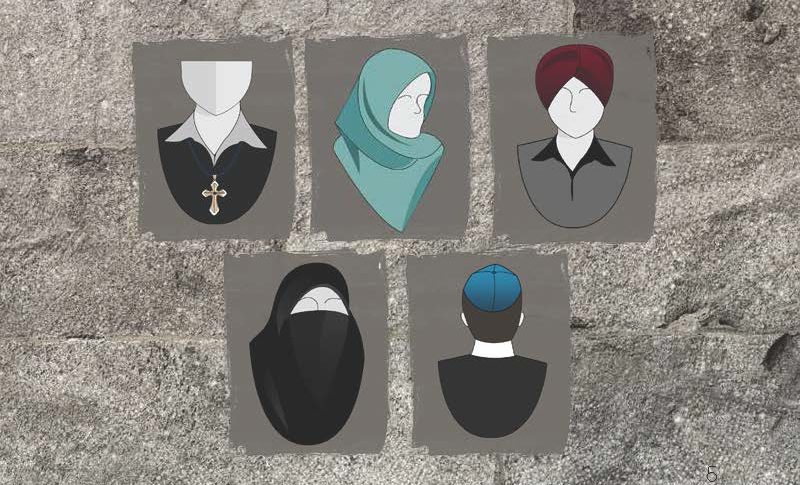 On November 7th, 2013, on the heels of a heated public debate about the role of religion in public life, the government of Quebec tabled its controversial Bill 60, “Charte affirmant les valeurs de laïcité et de neutralité religieuse de l’État ainsi que d’égalité entre les femmes et les hommes et encadrant les demandes d’accommodement” (Charter affirming the values of State secularism and religious neutrality and of equality between women and men, and providing a framework for accommodation requests). The legislation, introduced by Bernard Drainville, the minister for democratic institutions and active citizenship, seeks to affirm the religious neutrality of the state, specifically by prohibiting public sector employees—including those working in hospitals, schools, daycare centers, and universities—from wearing “signes ostentatoires” (conspicuous religious symbols), examples of which include hijabs, kippas, Sikh turbans, and “large” crucifixes. The legislation also proposes to amend Quebec’s Charter of Human Rights and Freedoms in order to enshrine the equality of men and women as the highest human right, to which other rights (e.g. freedom of religious expression) would be subordinated.
On November 7th, 2013, on the heels of a heated public debate about the role of religion in public life, the government of Quebec tabled its controversial Bill 60, “Charte affirmant les valeurs de laïcité et de neutralité religieuse de l’État ainsi que d’égalité entre les femmes et les hommes et encadrant les demandes d’accommodement” (Charter affirming the values of State secularism and religious neutrality and of equality between women and men, and providing a framework for accommodation requests). The legislation, introduced by Bernard Drainville, the minister for democratic institutions and active citizenship, seeks to affirm the religious neutrality of the state, specifically by prohibiting public sector employees—including those working in hospitals, schools, daycare centers, and universities—from wearing “signes ostentatoires” (conspicuous religious symbols), examples of which include hijabs, kippas, Sikh turbans, and “large” crucifixes. The legislation also proposes to amend Quebec’s Charter of Human Rights and Freedoms in order to enshrine the equality of men and women as the highest human right, to which other rights (e.g. freedom of religious expression) would be subordinated.
From the government’s initial indications concerning this legislative initiative in May 2013 through a noisy publicity campaign launched in September 2013, the Charter of Quebec Values (as it is popularly called) has created tremendous division within Quebec society, with politicians, journalists, media celebrities, unions, and other public figures and institutions aligning onto bitterly opposing sides. Supporters of the charter have characterized the initiative as a consummation of the Quiet Revolution of the 1960s, when Quebec first began to reject the dominant political role enjoyed by the Catholic Church. They construe the charter as a necessary step to protect the public sphere from religious influence, modeled, in part, on legal initiatives adopted in France; the charter thus serves as a repudiation of Canada’s multiculturalism policy as a weak and dangerously indiscriminate mechanism for regulating cultural and religious diversity and securing social solidarity. Opponents decry the charter as a thinly disguised attack on religious minorities, especially Muslim women, who will face unprecedented barriers to employment and participation in public life if the charter’s restrictions are enacted. These opponents therefore see the charter as a sign of Quebec’s endorsement of the Islamophobia that has swept the Western world in the post-9/11 years.
Given that the ruling Parti Québécois is a legislative minority, it is far from clear whether the bill could be passed in its current form. Numerous political observers have interpreted the debate around the charter as political posturing, a calculated effort on the part of the Parti Québécois to shift discussion away from potentially more damaging topics, like the province’s poor economic performance. But even if the charter is primarily a diversionary tactic, the underlying issues merit closer attention.
What political good does this charter aim to achieve? To what social concerns does the proposed charter respond, and how does the response shape our understanding of the initial concerns? Is the attempt to ban “conspicuous signs” of religion from the public sector simply an importation of French-inspired secularism, or are there significant differences at work? And what are the fundamental assumptions guiding the Quebec government’s definition of religion, its characterization of religious neutrality and the visibility of religion, and its claims—both explicit and implicit—about the proper role of the state in managing religion?
Many thanks to contributors Jeremy Stolow and Jean-Michel Landry for their assistance in conceptualizing this discussion. For an informative overview of the press coverage of the charter, please see Jean-Michel Landry’s recent post.—ed.
This page was updated on 2/21/2014—ed.
Our respondents are:
Valérie Amiraux, Professor of Sociology, Université de Montréal
Lori G. Beaman, Full Professor of Classics and Religious Studies, University of Ottawa
Benjamin L. Berger, Associate Professor of Law, York University
Simone Chambers, Professor of Political Science, University of Toronto
Ian Alexander Cuthbertson, PhD candidate in Cultural Studies, Queen’s University
Mohammad Fadel, Associate Professor of Law, University of Toronto
Jean-François Gaudreault-DesBiens, Professor of Law, Université de Montréal
Pamela Klassen, Professor of the Study of Religion, University of Toronto
David Koussens, Assistant Professor of Religious Studies, University of Sherbrooke
Jean-Michel Landry, PhD candidate in Anthropology, University of California, Berkeley
Georges Leroux, Professor Emeritus of Philosophy, Université du Québec à Montréal
Jocelyn Maclure, Professor of Philosophy, Université Laval
Ruth Marshall, Associate Professor of the Study of Religion and Political Science, University of Toronto
Jeremy Stolow, Associate Professor of Communication Studies, Concordia University
Charles Taylor, Professor Emeritus of Philosophy, McGill University
Jeremy Webber, Professor of Law, University of Victoria
Daniel Weinstock, Professor of Law, McGill University
______
 Valérie Amiraux, Professor of Sociology, Université de Montréal
Valérie Amiraux, Professor of Sociology, Université de Montréal
Do you remember watching The Shining by Stanley Kubrick for the first time? The rapid escalation of events, the loss of control, and the feeling of sliding inescapably into unspeakable horror? The psychological transformation of Jack Nicholson’s character from an ordinary father into abhorrent evil? Since the controversial Bill 60 was been submitted by the legislative minority government in November 2013, this has been very close to my own experience as a French academic—who migrated to intercultural Montreal soon after the Bouchard-Taylor Commission started working on reasonable accommodations for the cultural differences of minorities—working on pluralism.
The analogy is not merely rhetoric. Irrationality and absence of control are two undeniable features of the public conversation currently engaging a large number of Quebecers around what the government presented last fall as “the best way to answer religious pluralism in a modern state.” As in the movie, nothing tangible informs the political move by the Parti Québécois. Indeed, Bernard Drainville, the minister for democratic institutions and active citizenship, presented the initiative of the charter earlier last fall as an answer to the “unease” felt by certain people in Quebec, in particular by parents confronted with visible religious diversity in institutions of public education. There are no facts, no numbers to document the embodiment of that “unease.” Relying on impressions instead of facts has immediate and concrete consequences: it gives legitimacy to the public expression of all sorts of “concerns,” “ideas,” “feelings,” and “emotions” that suddenly sound justifiable simply because they are experienced by the speakers. Thus, any escalation is vindicated. So we heard the aforementioned minister talking about the Islamization of Quebec as a real social concern, with the same confidence as we heard, during the general consultation and public hearings on Bill 60, ordinary citizens (testifying in their personal capacity) expressing their shock at seeing “people praying on the ground on carpets” during a visit to a mosque in Morocco, using that shock to justify their apprehension at Montreal turning into Afghanistan. Bill 60 operates as a tsunami in secular democratic Quebec society, drowning out people’s basic confidence in the ability of one of the most sophisticated legal frameworks to realistically accommodate religious pluralism and establish equality between individuals. But unlike watching The Shining, we cannot switch on the lights when it’s over and go back to real life. Le mal est fait.
______
 Lori G. Beaman, Full Professor of Classics and Religious Studies, University of Ottawa
Lori G. Beaman, Full Professor of Classics and Religious Studies, University of Ottawa
Whether the Quebec Charter of Values, to use its abbreviated and popular title, is a diversionary tactic is in many ways beside the point. The divisive effect of the charter, which is ironically portrayed as a unifying device by the Parti Québécois (like the fraternite created by a similar law in France), can be viewed in the submissions to the National Assembly, Quebec’s legislative body, or in some responses to the recent death of Naima Rharouity, a forty-seven-year-old woman who was strangled when an article of her clothing was caught in an escalator in Montreal. The assumption made and reported by some news media that she was wearing a headscarf was then followed by vitriolic online comments. That a government can manufacture a problem such that the problem is reproduced as reality in the daily lives of everyday citizens in the form of discrimination is not new, but it is unconscionable.
Entwined in this discussion about the charter is the Roman Catholic Church, which, for the purposes of the “common values” identified by the Quebec government, is not religion but culture and heritage. In other words, the public and government discourse about religious symbols that are associated with Catholicism and Christianity is that they are part of “our heritage and culture,” and therefore not “religious” in the same way that a turban, hijab or kippa are. The extent to which this re-characterizing goes is illustrated by a decision from the Quebec Court of Appeal (now on its way to the Supreme Court of Canada): in Saguenay c. Mouvement laïque québécois the court held that neither the recitation of prayer at the beginning of council meetings nor the presence of a crucifix in the main council meeting room violated the human rights of non-believers nor did they raise concerns about the neutrality of the state. The prayer begins: “Almighty God, we thank you for the numerous blessings you have given us,” but, following the Italian case of Lautsi v. Italy, the court held that the prayer is not specifically Christian, but rather representative of universal values. Glossing mainstream religion in Quebec with the glow of heritage and culture reifies an “us” who is largely unassailable. Such tactics create space for an invigorated project of othering that alienates and endangers members of minority religious groups.
______
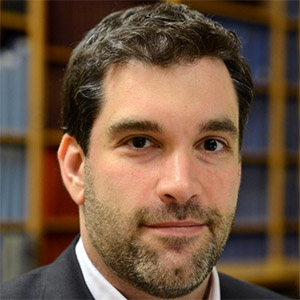 Benjamin L. Berger, Associate Professor of Law, York University
Benjamin L. Berger, Associate Professor of Law, York University
Quebec has been a kind of North American palimpsest for claims of sovereignty. The early sovereignty of Indigenous North Americans was recognized through treaties by the European powers that came to Canada. The story of how those lines of Indigenous sovereignty were effaced in favor of the claims of the French and, later, the British Crown is well known, though inadequately digested into our political lives. In the mid- to late-nineteenth century, Catholic ultramontanism asserted the authority of the Catholic Church over social and political life in Quebec and it would not be until the so-called “Quiet Revolution,” begun in the 1960s, that political authority and the Church would become formally disentangled. And, of course, Canadian political history of the late twentieth century was consumed with the question of Quebec’s sovereignty, ultimately threatening to fracture the country, at about the same time that Canadians were starting to again see the old lines of Indigenous sovereignty over this land.
Bill 60 slides neatly into this story. In this battle to define the local nature of the secular, one finds a reminder of the many ways that, in modern political life, religion is put in service of inscribing state sovereignty. The claim that the proposed charter protects an historical tradition of laïcité shared with France is anachronistic and false. The idea that it will secure state neutrality is entirely belied by the internal inconsistencies and paradoxes that riddle the bill. What is true is that the so-called Charter of Quebec Values is imbricated in a local history—a set of “complicated emotional inheritances,” as Talal Asad puts it—and a contemporary political reality that make it a poignant expression of the way that defining the nature and claims of the secular has emerged as a distinctively modern means of asserting state sovereignty and defining national identity.
______
 Simone Chambers, Professor of Political Science, University of Toronto
Simone Chambers, Professor of Political Science, University of Toronto
Bill 60 has unleashed an extraordinary public response from all levels of Quebec society. While polls still show that a mostly silent majority is positively disposed to the bill, a vocal, articulate, thoughtful, and passionate public campaign against the bill is forcing the Parti Québécois to answer tough questions and demanding that Quebecers take a good look in the mirror. Opposition coalesces around two focal points: a discourse of rights that takes the form of a vigorous defense of freedom of religion and a more embedded (ultimately more telling) discourse of identity that asks is this who we really are or who we want to be? At a minimum this public debate has made the choice faced by Quebecers clearer. To support Bill 60 is not to support religious neutrality but rather to embrace an identity described by one public figure as a “homogeneous catholic-laicity.” The secularism championed in Bill 60 is shot through with Christian, indeed Catholic, elements. From the insistence that religion is essentially internal to the pervasiveness of Catholic symbols, iconography, and narratives, Quebec culture is saturated in its own religious history. This was invisible to many. Debate over Bill 60 has made it visible. After this conversation it will no longer be possible not to notice the hundreds indeed thousands of crosses that make up Quebec’s landscape. Bill 60 is an attempt to freeze and defend that cultural landscape from outside forces. The people of Quebec may very well choose the freezing strategy but it is important that they recognize they are not choosing religious neutrality but a particular cultural/religious identity that excludes other religious identities.
______
 Ian Alexander Cuthbertson, PhD candidate in Cultural Studies, Queen’s University
Ian Alexander Cuthbertson, PhD candidate in Cultural Studies, Queen’s University
The Quebec Values Charter depends upon two basic, if problematic, assumptions: one, that religion is, as ex–Supreme Court judge Claire L’Heureux-Dubé claimed in Le Devoir earlier this month, “first and foremost an inner commitment, a belief,” and two, that active religious signs can become passive aspects of religious heritage. These two assumptions provide coherence to the otherwise incoherent claim that a large crucifix worn around the neck by a state employee is an ostentatious religious object that threatens the secular nature of the state while a large crucifix hanging above the speaker’s chair in the National Assembly is merely an emblematic element of Quebec’s cultural heritage.
The very idea that religious objects can be deemed ostentatious depends upon religion being constrained as a private, personal, and interior matter. This logic also underlies the claim that wearing ostentatious religious objects allows for “passive or silent proselytizing.” When religion is essentially about belief then religious objects are vehicles for inculcating those beliefs. In this view, conspicuous religious objects broadcast religious beliefs that infringe upon the desired neutrality of the state.
So why isn’t the crucifix hanging in the National Assembly conspicuous? Perhaps for the same reason that Montréal residents living under a thirty-meter-high cross on Mount Royal could argue that the hanging of near-invisible eruv wires in Outremont infringed on the secular nature of public space. Familiarity, it seems, allows religious signs to lose their perceived power to proselytize or to offend; which means that in Quebec, ostentation, like religion, is in the eye of the beholder.
______
 Mohammad Fadel, Associate Professor of Law, University of Toronto
Mohammad Fadel, Associate Professor of Law, University of Toronto
The battle over multiculturalism and the corresponding duty of “reasonable accommodation” is reaching a dangerous crossroads in Quebec, not because of its failure, but precisely because it has been so successful—at least from the perspective of those interested in promoting and maintaining a pluralistic society composed of different ways of life, religious and non-religious. Under applicable standards of Canadian constitutional law, the government has an obligation to demonstrate why a rule that burdens an individual’s ability to exercise his or her religion—even in circumstances where the rule at issue was not passed with a discriminatory intent—is demonstrably necessary in a democratic society. Where it cannot meet that burden, the government is required to make a reasonable attempt to accommodate its religious citizen. The Canadian approach to this question is different from that of the United States, where the Supreme Court has held that a law of general applicability, free of anti-religious animus, never violates the free exercise clause of the First Amendment. The Canadian system therefore places a thumb on the scale in favor of accommodation, so to speak, while in the United States, accommodations can only be made through political lobbying. This feature of US law guarantees that powerful religions enjoy more freedom to practice compared to weaker religions, a feature the Supreme Court recognized but determined was an inevitable cost of a religiously pluralist republic. This majoritarian approach to religion-based accommodation also appears to be at play in Quebec, where the majority (or a presumed majority) wants to determine, from its own perspective, how religion ought to be practiced in its territory, largely out of a desire to protect what they believe is the unique culture of Quebec. It is no surprise, then, that a separatist political party would use issues of the accommodations of minorities to distance Quebec further from the rest of Canada. One hopes that calmer voices in Quebec will prevail and that Quebec will reject those inviting it to separate further from the rest of Canada, which has been a remarkable success story for multiculturalism.
______
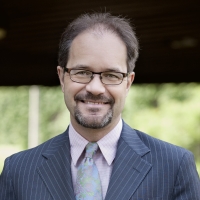 Jean-François Gaudreault-DesBiens, Professor of Law, Université de Montréal
Jean-François Gaudreault-DesBiens, Professor of Law, Université de Montréal
Quebec’s proposed “secularism charter” can be viewed as an attempt to harness two different political undercurrents in view of promoting an agenda integrating, somewhat awkwardly, a largely ethno-nationalist vision of the polity and an abstract conception of citizenship.
Beyond the short-term benefits that the current Parti Québécois minority government might gain from the charter—a majority government, according to recent polls—this project could also serve a more important and long-term goal for this secessionist government, artificially creating a clash between the “Quebec values” allegedly enshrined in this charter and the Canadian constitutional order represented as consecrating a multiculturalist ethos posited as antithetical to such “Quebec values.” Irrespective of whether it is adopted, the secularism charter project perhaps first and foremost illustrates how the fear of the other can be manufactured, and how a small nation’s anxiety about itself can be instrumentalized, in view of reaping immediate electoral gains. Hence, the confusion entertained by the government about the charter’s objectives. Formally, the charter seeks to enshrine the religious neutrality of the state—something that already exists in the province’s legal order—to expand the scope of that neutrality to the individual appearance of state agents and others working for state-funded organizations, and to reinforce the normative impact of gender equality. Informally, however, government ministers keep talking about the deleterious effects of religious fundamentalism, when they are not directly referring to the alleged “Islamization” of Quebec society, even though Muslims in Quebec currently account for only 2 to 3 percent of the population. In other words, the government is arguably pursuing a politics of strategic essentialism aimed at mobilizing the French-Canadian majority—its core electorate—around the “defense” of its distinct identity and tradition.
That such political objectives animate the government should not obscure the deeper concerns that the secularism charter seeks to address. Until the early 1960s, the separation between the state and the then-dominant Roman Catholic Church was rather weak, as a result of which the Church’s views significantly influenced public policies. With the so-called “Quiet Revolution” of the 1960s, a process of secularization was launched, which culminated in a sharp decline of religious practice among the French-Canadian majority and even in an avowed anti-clericalism on the part of many citizens, religion being equated with oppression, and particularly the oppression of women. Support for the secularism charter is, to a large extent, propelled by such a vision. Thus, a central idea underlying the charter is that religion is, first and foremost, a matter of individual choice rather than one of identity, and that such individual choice can in no way dictate the conduct of public organizations. Two consequences flow from these assumptions. First, the government promotes a conception of freedom of religion that evaluates individual religious choices in reference to a religion’s established dogmas, thereby rejecting the “subjective” approach enshrined in Canadian constitutional law (under which any sincerely held belief connected to a transcendent entity is protected by freedom of religion) and privileging instead a more “objective” approach that somehow reveals its Catholic roots (as in the French model of “Catho-laïcité”). Second, a sharp distinction is affirmed between the private and public spheres, religious believers being free to do whatever they want in the private sphere but not in the public sphere, especially as regards the external manifestations of their beliefs. This justifies the secularism charter’s ban on all “ostentatious” religious signs, which radicalizes a distinction established in other countries between the forum internum and the forum externum.
The close cultural connection between Quebec and France partly explains the appeal of such distinctions. Indeed, the French model of laïcité is heralded by the government and its supporters as a success (in spite of recent data to the contrary), while the Canadian or British models of multiculturalism are represented as failures (also in spite of data to the contrary). A shared conception of the state and its legitimate spheres of intervention may also explain the similarities between the rather paternalistic policies promoted by both France and Quebec, especially as regards women deemed to be particularly vulnerable to inequalities (i.e. religious women, especially Muslim ones). Yet, in spite of such similarities, Quebec’s Charter of Secularism is somewhat more radical than its French inspiration, as its scope is arguably broader. Moreover, while the French model has been in construction for more than a century, with episodes of both radicalization and softening, Quebec’s proposed Charter of Secularism clearly represents a sharp and drastic break with the province’s historical and legal traditions of religious accommodation. It remains to be seen what effects it will have, in the long run, on the social cohesion it aspires to create.
______
 Pamela Klassen, Professor of the Study of Religion, University of Toronto
Pamela Klassen, Professor of the Study of Religion, University of Toronto
While the current debate in Quebec over the Charter of Values is loudly focused on the question and status of the secular, it is also more quietly about sovereignty. Proposed by the minority government of the Parti Québécois—a party that understands Quebec to be a nation colonized by Canada—the charter is a call to nos valeurs (“our values”) and to Quebec nationalism all at once. In contrast to the “open secularism” recommended by the Bouchard-Taylor Report of 2008, the Parti Québécois has turned to what might be called closed secularism—to a policy platform of hard neutrality—in a bid to win over voters to its vision. There are many complicated battles within the politics of the charter, especially those related to gender, immigration, and First Nations in Quebec. Here, I comment briefly on a particularly vivid materialization of the knotty politics of sovereignty and the secular. A now infamous crucifix adorns the wall of Quebec’s now explicitly secular National Assembly; the crucifix gained its notoriety when the Bouchard-Taylor report recommended its removal as an explicitly Christian symbol. The Liberal government of the day and the current Parti Québécois government both rejected this claim, claiming the crucifix to be a symbol of heritage and not religion. Less notorious is another emblem of power that hangs just above the relatively small, crucified Christ: an ornate gold leaf and wood carving of the coat of arms of the British monarch. Carved into the Speaker’s chair are a lion and a unicorn holding up a coat of arms that proclaims God’s favor on Queen Elizabeth II’s rule and decrying all those who would defame it, with a two-part motto that reads: Dieu et mon droit (“God and my right”); Honi soit qui mal y pense (“Shame on those who think ill of it”). Bound together as material, historical symbols of the complicated interweaving of state sovereignty with Christian power in Quebec (or in Canada more broadly), the crucifix, the lion, and the unicorn testify to the impossibility of religious neutrality.
______
 David Koussens, Assistant Professor of Religious Studies, University of Sherbrooke
David Koussens, Assistant Professor of Religious Studies, University of Sherbrooke
In recent years, controversies in Quebec concerning the visibility of religion in the public sphere have increasingly fostered the emergence in the public discourse of a nationalist conception of secularism. This conception is found in a discourse that holds that (1) secularism is a political principle that proceeds from the specific history of relations between churches and state in a society; (2) secularism is a political principle anchored to a legal norm that formalizes the separation between churches and state; (3) secularism is a political principle that, while it defends certain principles of justice, nonetheless exceeds legal democratic principles in that it holds in itself values—such as emancipation and assimilation—that these legal principles ignore; (4) secularism is a political principle that implies that effective participation in the social body is conditioned by the “visible” adherence of citizens to the values it stands for.
We are here dealing with a secular discourse that does not necessarily correspond to the legal reality of secularism in a society. However, this discourse is not altogether devoid of normative effectiveness and may, depending on circumstances, reflect itself in the legal norm insofar as it provides leaders with the justification required for political decision making. This is precisely what is taking place in Quebec in the context of the debates surrounding Bill 60. In these debates, secularism is construed as a historical national narrative that has to be reaffirmed as being of central value to integration and as a regulating principle of social cohesion. By associating secularism with a political principle of integration and by voiding it of the guarantee of principles of justice that constituted its purpose, the existing legal categories find themselves unsettled.
This anchoring of secularism to identity manifests itself as a form of pressure on the part of the majority group that only accepts the expression of diversity in the public space if it conforms to the conception of the good that predominates in society, and therefore sets itself against the democratic tradition of the recognition of rights and freedom. Bill 60, which purports to make of secularism a value of civilization, thereby demonstrates a very low degree of neutrality. Indeed, if neutrality is to be one of the fundamental guiding principles of secularism, it is precisely because the political leadership can only be legitimate—and accepted as legitimate—if it guarantees equal justice for all without adopting, favoring or rejecting one of the conceptions of the good life that is present in society.
______
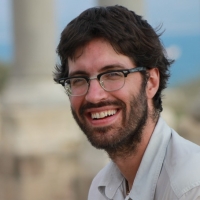 Jean-Michel Landry, PhD candidate in Anthropology, University of California, Berkeley
Jean-Michel Landry, PhD candidate in Anthropology, University of California, Berkeley
Critics of the Charter of Quebec Values depict the document as “a solution in search of a problem.” Charter enthusiasts respond that the Quebecois can no longer indulge in willful blindness, and that the charter is necessary to “defend Quebec identity.”
This latter claim is very common, yet its implications we have not yet fully grasped. Surely, Quebec’s uniqueness (its patrimony, its French language and its own brand of social democracy) is precarious. But does a veiled public sector employee present any serious threat to this uniqueness—nowadays glossed as “identity”? Charter advocates deploy two lines of arguments here: (1) equating the veil with female subjugation, they read in it a negation of sexual equality, a cherished ideal in today’s Quebec; (2) measuring the secularity of a state by the outfit of its employees, they regard religious symbols as violating political secularism, a cornerstone of Quebec’s modernity. Yet whatever traction these arguments have gained recently, they rest on shaky assumptions.
And here lies the fundamental irony: while Charter advocates strive to secure these assumptions—rehearsing that the veil is intrinsically oppressive and that state secularism naturally abhors religious symbols—Quebec’s patrimony is facing unprecedented perils. The province today is on the radar of the international oil industry, which plans to crisscross Quebec with 1400 kilometers of pipeline and build an oil port on the shore of the St. Lawrence River. Interestingly, these projects have raised only environmental concerns so far; largely ignored in the debate on the threat they pose to the land is the parallel to discussions on identity and religious symbols. And yet, no one would deny that what is referred as “Quebec identity” is profoundly rooted in the land and its rhythms. The St. Lawrence River valley is the cradle of Quebec society, and the St. Lawrence River itself is much more than a waterway or a natural resource; it dominates our collective imaginary.
For decades, Quebecers fought to defend the land (the “patrimony”) against the monopolies that foreign capital long maintained over it. The shapes and contours of this territory are praised in Quebec’s novels and poetry while its colors dominate paintings and movies. Today international oil industries plan to radically transform our landscape in order to carry 1.4 million barrels of crude a day. While this is a very real threat to Quebec’s natural treasure and the cultural history embedded in it, many feel invaded primarily by the religious symbols worn by a handful of public employees. A shift in Quebec political thought seems to be under way.
______
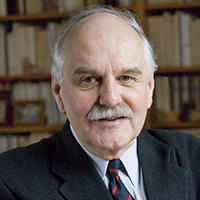 Georges Leroux, Professor Emeritus of Philosophy, Université du Québec à Montréal
Georges Leroux, Professor Emeritus of Philosophy, Université du Québec à Montréal
The ongoing debate over Bill 60 has shown a clear division among academics. Universities have expressed their doubts about the pertinence of the proposed charter and some faculty and staff have declared that if it were passed through Parliament they would not implement it. But there are still many professors who have made public their support for Bill 60, and the list of memoirs submitted to the parliamentary committee set up to discuss the bill shows that a consensus is nowhere in sight. Among those memoirs, I personally gave my support to the one signed by sixty faculty members from various universities objecting to the bill. According to our group, the charter is flawed for two main reasons. First, on the level of principles, it represents a limitation of rights that is not acceptable in a democratic society. The portion of the text that is most controversial, imposing a restriction on wearing religious symbols while on duty for all civil servants, from teachers to nurses, is contrary to the right to religious liberty, as stated in the Quebec Charter of Rights as well as in the Canadian Charter. There are no reasons, whether social or philosophical, to implement this limitation, which would bring about discrimination in hiring, not to mention plain xenophobia. Philosophers like Charles Taylor, Michel Seymour, Jocelyn Maclure, and me have argued that this is sufficient reason to reject the bill. The second reason was put forward by jurists, both from the law faculties and from the Quebec Bar. Almost unanimously, they argued that this bill will not pass the test of our courts and, if passed, will lead to years of useless procedures. The minister in charge of the bill has already declared that he is ready to modify the Quebec Bill of Rights if necessary, and in the case of the Canadian Bill of Rights, to invoke the so-called nonobstant clause for Quebec legislation. A vast majority of jurists think it unlikely that such an approach would work, and they claim that it would lead to an intolerant society.
I find myself in full agreement with these two arguments. Xenophobia is already rampant in Quebec society, mainly toward Muslim women wearing the hijab. A limitation of the right of these women seems unequivocally intolerant. Since the debate has begun, the Parti Québécois government has succeeded, only a few years after the Bouchard-Taylor Commission made public its important report recommending dialogue and tolerance, to ignite intolerance and provoke profound division in Quebecois society. Many political analysts, if not all, rejoin in making an obvious link between the promotion of the so-called laïcité and the promotion of a nationalist agenda for the coming elections. This is disappointing for all those who would wish for a more tolerant and liberal society.
______
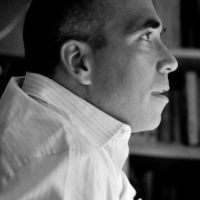 Jocelyn Maclure, Professor of Philosophy, Université Laval
Jocelyn Maclure, Professor of Philosophy, Université Laval
There is widespread agreement on most parts of Bill 60. The clause that reignited the debate on secularism in Quebec is the general ban on all “conspicuous” religious signs for all public sector employees, including civil servants, police officers, health care professionals, teachers, judges, and so on. If the Parti Québécois weren’t using the “secularism charter” as a wedge issue, we could have a consensual bill that would have the benefit of formalizing and clarifying political secularism in Quebec. The fact that the party didn’t choose that route is deeply unfortunate. The way the debate was framed has led to new social divisions and to a surge of Islamophobia.
Be that as it may, I want to focus on one argument in favor of the general ban on religious signs for public sector employees. Supporters of the ban recognize, of course, that individuals have the right to freely exercise their religion in their private and associative life. Public employees, however, represent the state or other public institutions, and they must therefore, according to the ban’s supporters, embody the religious neutrality of the state, and they should not express their faith when they are at work. They have a “duty of discretion” with regard to their faith, just as they have one with regard to their political opinions.
Although I disagree wholeheartedly with this line of argument, I want to suggest here that it is a serious one that requires a careful refutation. Such a refutation involves showing that the differences between religious and political signs are more significant than their similarities, with regard to the limits that can legitimately be imposed upon freedom of religion and freedom of expression. Among the crucial differences between the two, there is the fact that while there is a separation between political power and religion, there can be no such separation between political power and political ideology. The fact that a civil servant passively expresses her religion doesn’t in itself make the state any less secular, whereas there must be an airtight separation between the political battles that are fought in the legislature and the public administration. Moreover, the only purpose of the analogy between religious and political signs is to justify the ban on religious garbs; it has no positive function. Who feels duty bound to wear a shirt or button with a political slogan on it in public at all times? Rights and freedoms are based on fundamental human interests and not on contrived, far-fetched scenarios. As I have argued elsewhere, the analogy fails to justify the controversial and unnecessary ban.
______
 Ruth Marshall, Associate Professor of the Study of Religion and Political Science, University of Toronto
Ruth Marshall, Associate Professor of the Study of Religion and Political Science, University of Toronto
The charter may have been dreamed up as a cynical political gamble by a beleaguered Parti Québécois, creating what McGill law professor Daniel Weinstock rightly calls a “solution without a problem,” yet its effects go beyond political or sovereignist ambition to the very substance of state sovereignty. In short, what the charter accords the state are powers that extend beyond the legal to the theological. The paradox of a secular power taking on a position of religious authority to arbitrate tensions between religious freedom and state neutrality is an inevitable aspect of policing the “wall of separation” and reveals what Winnifred Fallers Sullivan calls “the impossibility of religious freedom.” But rarely in modern democracies have we seen such an explicit and ultimately absurd embrace of the role of the “theologian state.” These powers are clearly stated in chapter 10 (“Powers of the Government”): “The Government may make regulations to facilitate the implementation of this Charter, including regulations defining the terms and expressions used in the Charter or their scope, in particular by determining the cases and circumstances in which and the conditions under which an object, by its conspicuous nature, overtly indicates a religious affiliation.” The extent and exclusionary nature of these overweening and clearly theological powers is best expressed in chapter 7 of the charter, which lays out the “Rules Applicable to the Educational Childcare Services Sector,” and covers all public or publicly subsidized daycare services for preschool children, including state recognized providers of childcare services in the home. With the stated goal of “facilitat[ing] social cohesion and the integration of children without regard to social or ethnic origin or religious affiliation” article 30.3 stipulates: “a repeated activity or practice stemming from a religious precept, in particular with regard to dietary matters, must not be authorized if its aim, through words or actions, is to teach children that precept.” The clear object of this article is a barefaced attempt to prevent the serving of halal food; the veil of a broad injunction against the inculcation of all religious precepts is absurdly transparent. Will the state intervene to sanction care providers who repeatedly enjoin their infant charges not to steal a toy from little Judith, Jamal or Jacques, or hit them over the head with it, or blame little Jyoti, or kick their parents for scolding them after?
______
 Jeremy Stolow, Associate Professor of Communication Studies, Concordia University
Jeremy Stolow, Associate Professor of Communication Studies, Concordia University
At the heart of the controversy over Bill 60 is its proposal to draw a line between “ostentatious” and “non-ostentatious” religious signs, and their respective degrees of permissibility within the public sector workplace. This distinction treats the place of religion as a problem of regulating visual pollution. Consider, for instance, the infographic produced by the Quebec government that explains how ostentatious religious signs will be dealt with. On one side one finds a hijab, a niqab, a kippa, a dastar (Sikh turban), and a “large” crucifix; lined up on the other side are several items of jewelry: a small crucifix, a ring bearing a Star of David, and a crescent moon-shaped earring. What is going on here?
Firstly, let us note how a rather disparate collection of bodily disciplines, habits, aesthetic sensibilities, and material affordances for the cultivation of piety disappears behind the surface of signs that function synecdochally as markers of one’s religious identity and affiliation. Once they enter the arena of the “neutral state,” regardless of the intentions or assumptions of their wearers, the hijab, the niqab, the kippa, and the dastar all become equally recognizable as visual matter “out of order.” Secondly, the infographic reminds us that the modern state has a stake, not only in proscribing undesirable forms of religious attire, but also in clarifying what belongs to the category of the “non-ostentatious.” On these terms, Bill 60 epitomizes a much larger and more longstanding liberal project (not at all unique to the Quebec situation) to reconstruct modern religions as spheres of personal conviction. Within the pax moderna of privatized, personal convictions and secular state power, the non-ostentatious sign becomes the marker of religion that “knows its place.” Thirdly and perhaps most importantly, this project to contain religion also includes a mechanism of inclusion for the offending parties, through the generation of “substitute signs” that will allow the bad subjects of religious civility to make their identities, affiliations, convictions, and practices more acceptable. Paradoxically, the very state that proclaims it is trying to create and protect a “religiously neutral” public space has ended up inventing religious practices that never existed before, by creating its own iconographic repertoire that will allow kippa-wearing Jews, hijab-wearing Muslims, and dastar-wearing Sikhs to enter into the public space of the state and to join the ranks of their small-crucifix-bearing liberal citizens. This paradoxical gesture should not surprise us. On the contrary, the strange visual language of Bill 60 perfectly instantiates what Talal Asad elsewhere has described as “the game of religious signs” that the secular state plays and, in playing, allows the abstract being of the modern state to be realized in the first place.
______
 Charles Taylor, Professor Emeritus of Philosophy, McGill University
Charles Taylor, Professor Emeritus of Philosophy, McGill University
It’s easy to see why the Charter of Quebec Values has so divided our society. It claims to be just clearly defining what secularism (laïcité) means. Apparently it requires that all workers in the public sector, broadly defined to include all agencies funded by the government, including hospitals and schools, should refrain from wearing clothes or other signs that make their religious affiliations obvious. Primary examples of these: observant Jews wearing kippas, Sikhs wearing turbans, and Muslims wearing the hijab. This would, of course, involve discrimination against these religious affiliations as against others that permit one to be totally discrete about one’s position. As such it is against the Quebec Charter of Rights and the Canadian Charter, unless one can find a good reason in the public interest. But the only reason supporters of the bill can come up with is that secularism must appear in the dress of public sector workers to be real.
The popularity of the proposed law comes from the cultural fears of many Quebecers in the face of unfamiliar religions, which also seem to many to be very strongly held, since the insistence on wearing these signs is widely seen as a kind of anti-statement to Quebec society’s very secular and strong but ambivalent distancing from our Catholic past. This misreading is a consequence of the unfamiliarity of these new (to Quebecers) religions, and it is deliberately fostered by the government in order to drum up support. The campaign is all the more successful in the present climate of wariness of Islam in the West, not to speak of Islamophobia. Government propaganda hints that there is some link between wearing the hijab and Islamist extremism; this is taken up by a segment of the feminist movement that sees in such signs an endorsement of the subjugation of women; all protests to the contrary by Muslim women are brushed aside by these feminists and branded as “false consciousness,” though a substantial part of the Quebec feminist movement opposes this branding.
Why has the government done this? The independentist party (Parti indépendantiste) finds its main planks slowly sinking in support. In the last election the party only managed to elect a plurality of deputies, and for a minority government. Its members have turned to this measure as a way of getting a majority in an election they will soon call. This in spite of the fact that their charter would have been anathema to the founding generation of their party, and that several members of the government are on record having said in the past that such discriminatory measures are unjustified. The measure deeply divides Quebec society, between those who are willing to compromise this principle and those who cannot envisage doing so, between immigrants and native Quebecers, and between Montreal and the rest of the province. Many of the institutions that would be forced to fire workers who fall afoul of this measure have protested that they couldn’t live with it, including most hospitals, many municipalities and the majority of universities. It will discourage immigration from such regions where French is widely spoken, like the Maghreb. In short, it will wreak all sorts of havoc. Proposing it shows a spectacular victory of opportunism over principle in a party that used to be a pillar of human rights.
______
 Jeremy Webber, Professor of Law, University of Victoria
Jeremy Webber, Professor of Law, University of Victoria
A palpable electoral cynicism underlies Quebec’s proposed Charter of Values. The charter is justified by its respectable defenders as an embodiment of secularism, but it derives much of its electoral appeal from xenophobia. But is there substance behind the liberal arguments in the charter’s favor?
Among its liberal defenders, one set of arguments derives from anti-clericalism. Religion is seen to be inherently obscurantist and pernicious. We tend not to think of anti-clericalism as important in contemporary liberalism, but it still exists. John Rawls’ opinion that religious reasons should be excluded from public debate is one example. Such positions suffer, however, from two defects. They overestimate the demands of rationalism, treating moral reasoning as though it can be strongly separated from broader cultural phenomena. And they spurn the potential for moral insight carried within religious idioms.
A second factor is a republican commitment to the cohesion of the public sphere. On this view, marks of religious identification emphasize partiality rather than community, bring private claims into the public realm, and impede individuals from deliberating together simply as citizens. Requiring public employees to remove such marks is a way of ensuring full inclusion and participation. But the problem is that, in the name of inclusion, the charter forces citizens to leave crucial aspects of their identity behind when they enter the public realm. Consequently, the majority of them have little opportunity to learn about those who hold unfamiliar beliefs. Moreover, people who believe they cannot remove their headscarves are forcibly excluded. And it impacts believers unequally. The unfamiliar are targeted.
The final factor is women’s equality. For many of the bill’s supporters, the presumed oppression of women within Islam is the true target. But their reading of the meaning of Islamic head coverings is reductionist, reasoning only from the most complete form of covering and studiously ignoring important meanings such as modesty, opposition to a sexualized view of women, or a simple declaration of faith.
There are, then, liberals in favor of the charter, although they exist in unholy alliance with xenophobes. Moreover, the liberal positions proceed from a jaundiced view of religious belief and a strong emphasis on republican commonality. They merge, then, with a unifying and homogenizing view of the polity. There is, it appears, more structural similarity between the charter’s liberal defenders and the xenophobes than the former would like to admit.
______
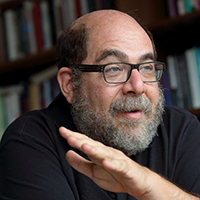 Daniel Weinstock, Professor of Law, McGill University
Daniel Weinstock, Professor of Law, McGill University
The Quebec Charter of Values has managed to attract significant support because it speaks to a number of constituencies that do not usually find themselves on the same side of political debates. French-style secularists admire the charter because it affirms the neutrality of the state, a value that in their view requires not only the neutral functioning of institutions, but also the neutral appearance of those who draw a salary from the state. Feminists have been drawn to it because they (correctly) see the primary target of the proposed legislation as being the Muslim hijab, which they see as a sign of the oppression of women within Islam. Conservative nationalists view the charter as an affirmation of the prerogatives of the historical majority, and of the right of that majority to require of new arrivals (and in fact of all those who do not share in “old-stock” Quebec identity) that they adapt to the norms, values and practices of the majority.
Feminists, conservative nationalists and French-style republicans do not usually find themselves arguing for the same policies. The fact that they are in this case suggests that they are willfully ignoring aspects of the charter that do not jibe with their beliefs. Thus, for example, republicans and feminists willfully ignore or downplay aspects of the charter that affirm the Catholic identity of Quebec.
But obviously, each of these groups has found enough in the charter that corresponds to their values to sign on to it. The robustness of this coalition makes it all the harder for those of us who feel, as I do, that it represents an unacceptable violation of fundamental rights to argue effectively against it.












